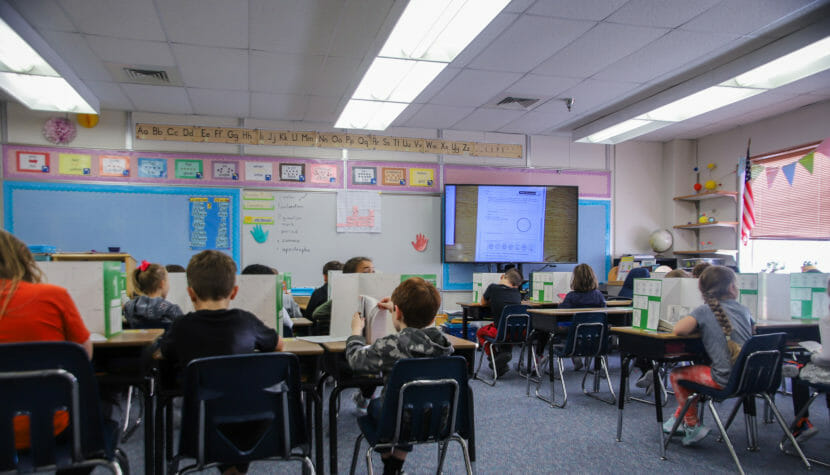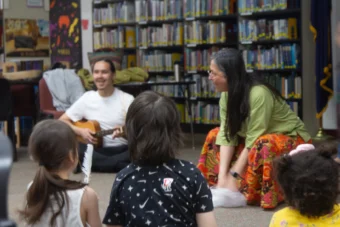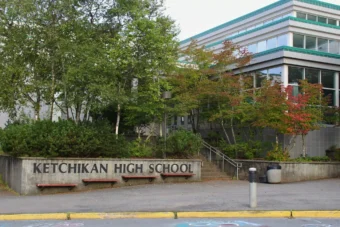
With the start of Alaska’s next legislative session right around the corner, many lawmakers are talking about boosting education funding.
The baseline funding the state gives to school districts — known as the base student allocation, or BSA — has, essentially, not changed since 2017. At the same time, the cost of pretty much everything has gone up, and districts are facing severe budget shortfalls and wrestling with difficult decisions, like closing schools, eliminating positions and increasing class sizes.
So, as the Anchorage Daily News reports, some legislators say it’s a major priority to get more money to the schools.
ADN reporter Iris Samuels are her colleague Morgan Krakow have been talking to lawmakers who want to increase the BSA.
Samuels says the two main questions are: by how much? And what strings will be attached?
Listen:
The following transcript has been lightly edited for clarity.
Iris Samuels: So from conversations I’ve had in recent days, it sounds like it’s a really high priority across the political spectrum. And maybe that’s a difference this year compared to previous years, because there have been some legislators that have been prioritizing this, have been talking about it for several years now. What’s different now is that more conservative lawmakers, lawmakers that are less eager to spend public dollars in any given year, are now acknowledging how important this issue is.
But different lawmakers are talking about this differently. And I hear from more Democrats just a willingness to increase funding and to get it so that districts feel whole and they feel like they can provide the services that they need. For more conservative lawmakers, they’re more likely to be talking about this in terms of student achievement as well. And Alaska ranks pretty low in some key metrics in terms of student performance in both reading and math. And that’s been the case for years. And some lawmakers are talking about how can we increase the formula increase the funding that schools get but make sure that that increase is tied to some metrics to ensure that education quality rises with this increase? That’s a bit of a problem, because it’s a chicken in the egg issue. How can you increase student performance when you don’t have enough money to heat schools?
Casey Grove: Right, yeah, definitely a chicken and egg kind of situation. And it seems like when you talk about that change in who is talking about this, it made me think of a quote that was in your story about, you know, people have talked about this being a problem in the past, “but now this is happening in my backyard.” And I think that’s kind of a reference to some of the schools that are, here on the road system, especially in Anchorage, they’re talking about having to close some schools to make up that budget gap. And it seems to get to your point of, the conversation hasn’t changed, it’s just who’s having that conversation seems to have changed a little bit, right?
Iris Samuels:: Right. And I think that the nature of the problem itself has become more acute with time, because there were a few things that happened in recent years that allowed school districts across the state to account for lower state funding with other sources. So the federal government had increases to school funding tied to the pandemic. And districts have been using that money and been trying to stretch those dollars. But that money has now run out. So a problem that was a little bit masked, there was kind of a Band-Aid over it, has now been exposed fully. And now we’re seeing everything that’s been happening under that Band-Aid for a couple years.
Casey Grove: Right. Now the Band-Aid’s off, and now it’s a major priority for the Legislature.
Well, I guess the last year or two might explain part of this, in terms of that pandemic funding from the federal government, but, I mean, we’re talking about (flat funding) going back to 2017, pre-pandemic. So why hasn’t this happened already? I mean, what are the roadblocks that have prevented lawmakers who want to increase education funding from actually doing that?
Iris Samuels: It’s a complex issue. But really, it comes down to the fiscal challenges that Alaska has been facing for several years now. It’s just a matter of some lawmakers see that the state’s resources, the money that the state has to give out to all the different services that the state offers, that amount is not where it needs to be. And the state had a big deficit. And so both Gov. Dunleavy and some lawmakers basically said, “You know, even if we want to make these increases, we just don’t have the money to do it.”
Casey Grove: And then there are also some lawmakers who have said they “don’t want to write a blank check” without those returns, in the form of better test scores, right? Is that still a roadblock? Are people still talking about that? And then, I guess, side question, how do they even measure that? Is it test scores? Is it GPAs? How does that work?
Iris Samuels: So that’s a good question. And I think we’ll see a lot of conversations around that in the coming legislative session. I think that some lawmakers might be saying now that they see the importance of increasing funding to schools, but they’re still kind of tied up on this issue of making sure that that funding is tied to better performances from the schools. The question is, how do you make that connection? It is sort of this open thing of, do you use test scores? Do you use other metrics? And it’s not by chance that even though legislators are saying now that they really are prioritizing increasing the Base Student Allocation, we haven’t actually seen particular bills that will do that, because legislators are still kind of working out the mechanisms to do that. And I think that there will be several different proposals. And the session will be several months long, and we’ll probably see a lot of evolution there.
Casey Grove: Yeah, I anticipate more stories about this to come, right?
Iris Samuels: Without a doubt.
Casey Grove: OK, Iris, as much as anyone can predict what the Legislature is going to do, what do you think’s gonna happen?
Iris Samuels: I would put the likelihood of funding increasing very, very high. The question is just by how much, and what kind of stipulations will be attached to that funding increase? So I’m not a person who will bet money on anything, but I do think that people can have confidence there will be a funding increase. How that increase comes, how big it will be, will have a huge impact on what districts can actually do with that funding increase moving forward.


